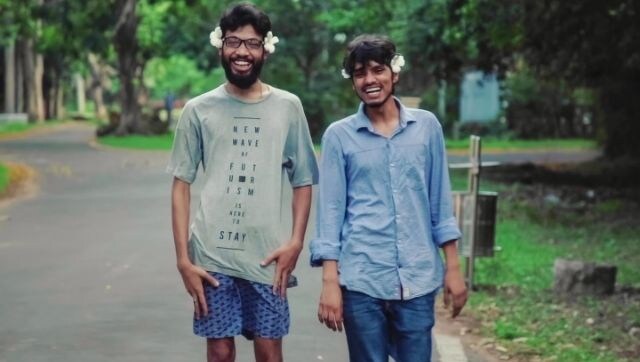
Still from Alma Matters
While the media focuses either on glamourous placement packages or on the darker side with student suicides, the narrative of the docuseries works to fill the gap in between, of students who come in with grand ideas, are disillusioned, and then spend time figuring out what it is they want in life.

Still from Alma Matters
“There’re two types of IITians,” says Alma Matters: Inside the IIT Dream co-director Prashant Raj. “One, who make IIT the clan that it is, and two, those who use the clan to find their direction in life.” While a few students know exactly what they want to do and are focused on achieving that, most cannot be expected to figure things out at 18. For this latter group, the allure of the Indian Institute of Technology lies in the aplomb and sparkle with which the former group is celebrated.
“The average IITian is supposed to be clueless,” adds Raj. “It’s (IIT) not about finding your passion, it’s about making sure you find something you’re comfortable with for the next 25 years of your career.” Even as this education allows one to pay the bills, finding one’s passion is a separate pursuit altogether. This perception explains why Alma Matters spends the entire first episode focused on the extracurricular activities at the institute.
Given the cluelessness several students carry around regarding their studies, many find direction in the several clubs and societies, events and festivals, and other extra-curriculars set up by the students themselves.
Co-director Pratik Patra is just one among many students who found his passion for filmmaking at the institute, later dropping out to focus on a career in media.
“Kharagpur is so quiet, and it’s so peaceful there that people can actually listen to themselves, introspect, and figure out what they want from life, apart from the societal expectations they’re burdened with,” says Patra about the 2,000-acre campus cut off from metropolitan life.
The docuseries focuses on arts, sports, elections, event management, and several other pursuits that students immerse themselves in, the remote campus being their whole world for the five years they are there.
The second episode is then dedicated to exploring the placements at the institute. Shots of students lining up for tests, sleeping on stairways, discussing interview rounds, and fretting about the future abound. “Pratik being there actually made it easier for the students to deal with the pressure because there was some place they could articulate their stress,” points out Raj.
The docuseries brilliantly draws out the insecurities and vulnerabilities of the students, a feat which the filmmakers attribute to their identity as IIT Kharagpur alumni. “There was a level of trust where access was concerned, and we didn’t seem out of place. For the students there, we were people who belonged to that community, we weren’t outsiders,” adds Raj.
During the nine days of placement filming, Patra, at one point, had the option of choosing to either film the toppers who had been placed and were celebrating or follow the students who had not fared as well academically, and were still clueless about what they wanted to do. By following the latter, he was showing a side of IIT that is often ignored, of students who are unsure about their own dreams and futures. The show explores how these students tackle being in this position. “It was a very exploratory journey for me as well, because I had never faced placements,” says Patra.
The final episode focuses on one of the college events, Illumination, and the experiences of a graduating batch. “When we started, we thought we’ll focus only on one event, Illu, and capture the stories of people participating, explore the friendships, and so on,” says Patra. How,ever, they realised that there was a lot to cover and the crew soon ended up with 500 hours of footage on their hands in their attempt to capture the “the culture and ethos of IIT Kharagpur.”
As past students themselves, the duo were most interested in authentically showing the student experience at the institute. This also meant that the docuseries lacks the curiosity of an outsider’s perspective, glosses over issues like suicides and gender disparity, and entirely eliminates students’ opinions on issues like caste and politics. It does focus resolutely on the majority student experience, exploring their psyches, and laying bare the joys and challenges of life as IIT Kharagpur students. "While we were shooting there were a lot of things that came across. With the people that we interacted with, caste didn’t come across as a theme," arugues Raj.
Made by alumni, about current students, the docuseries is best suited to future students of the institute. It honestly lays down the disillusionment several students feel upon entering this prestigious institute. “We want people who are preparing for IIT to manage their expectations. Understand that this is a place of learning that’s going to define how you think, define you as a person. It’s not about changing your life, and it’s certainly not a factory that’s setting your life,” says Raj.
Instead of being a comprehensive of the institute, Alma Matters is the duo’s homage to the institute that has shaped them enormously. “It’s our love letter, like writing a love letter to a parent,” says Raj. While the media focuses either on glamourous placement packages or on the darker side with student suicides, the narrative of the docuseries works to fill the gap in between, of students who come in with grand ideas, are disillusioned, and then spend time figuring out what it is they want in life.
Alma Matters: Inside the IIT Dream is streaming on Netflix India.